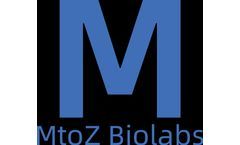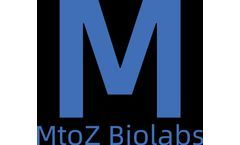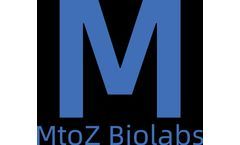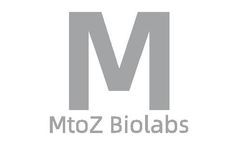Antigen Binding Articles & Analysis
29 articles found
They work by binding to foreign molecules, known as antigens, which can be proteins, polysaccharides, or other substances found on pathogens or abnormal cells. By binding to these antigens, antibodies can neutralize pathogens directly or mark them for destruction by other immune cells. ...
For example, their molecular weight, volume and polarity are much higher than those of small molecule drugs, which make the pharmacokinetic properties of mAbs different. The specific binding between the mAb and the target can also greatly affect the elimination of the mAb drug. ...
They have the advantages of small size, high stability, and good penetration, and therefore have a wide range of application prospects in the fields of clinical treatment, diagnostic reagent development, etc.Characteristics of NanobodiesThe size of nanobodies usually ranges between 10-15kDa, which is only 1/10 of the size of regular antibodies. Their unique ...
They can trigger an immune response in the human body by recognizing and binding to specific antigens, thereby combating pathogens. However, to develop monoclonal antibodies with high specificity and affinity, sequencing of the antibody's variable region is required. Sequencing the variable region of a monoclonal antibody refers to decoding the genetic ...
At present, peptide drugs have shown broad application prospects in the treatment of tumors, hepatitis, diabetes, and AIDS.Antibody-Based TherapyAntibodies are proteins produced by the immune system that can bind to specific markers on cells or tissues. In cancer treatment, monoclonal antibodies (mAbs) can directly kill cancer cells, prevent the development of tumor blood ...
Mapping Epitopes and Paratopes Through antibody sequencing, we can determine epitopes (binding sites of antigens) and paratopes (binding sites of antibodies), reveal information that helps to draw epitope maps, guide antibody design, and paratope variations, which can enhance the specificity of antibody drugs. ...
The constant region of an antibody is usually at the bottom of the molecule, close to the tail of the antibody, corresponding to the variable region of the antibody, which is responsible for recognizing and binding to antigens. The constant region usually contains a set of constant amino acid sequences, which determine the class (such as IgG, IgA, IgM, etc.) and ...
Nanobodies are the smallest functional single-domain antibodies known to be able to stably bind to antigens, and have unique structural and functional advantages. ...
Among them, the specific interaction between receptors and ligands can be used to target ligand-labeled liposomes to organs, tissues or cells containing ligand-specific receptors, and the binding of receptors and ligands can promote lipid Internalized into cells. Monoclonal antibodies can also be coupled with liposomes to construct immunoliposomes (or affinity liposomes), and the ...
Immunohistochemistry is the study of the localization, characterization, and relative quantification of peptides and proteins in tissue cells using the antigen-antibody reaction, in which an antigen specifically binds to an antibody and a chemical reaction results in the visualization of dyes such as fluorescein and other chromogens, as well as ...
Characterization of mAb intermediates includes primary structure (amino acid sequence, N-terminal/C-terminal sequence analysis, peptide map), secondary or tertiary structure, protein fragments/aggregates, and charge variants, glycosylation modification, post-translational modification, target binding properties and biological activity, etc. In addition, the mAb's effector ...
Bispecific antibodies have two antigen-binding arms, one of which binds to the target antigen and the other to the labeled antigen on the effector cells. ...
KineTACs are fully genetically encoded bispecific antibodies composed of a cell factor arm that binds to its homologous cytokine receptor and a binding arm that targets the desired protein. ...
Molecular docking, a critical component of structure-based virtual screening, plays a pivotal role in the field of drug design by predicting the binding interactions between small molecules and proteins. This article explores the various approaches, software tools, and techniques employed in molecular docking and highlights their potential in accelerating drug discovery. The ...
Antibody Backbone: The Starting Point for ADC Design l Selection of antigen specificity Since the mechanism of ADCs begins with the binding of target cells, the antibody should have high specificity for the target antigen. ...
It exists on the infected cell membrane and is highly conserved and antigenic. It can specifically bind to molecules on the cell surface and induce cellular and humoral immunity in the body. ...
STEAP1, TROP2, PSMA, CD46, and B7-H3 are currently being looked at as optimal antigens, which have been shown to be targeted by ADCs. 1. ADC For The Treatment of PCa PSMA-based ADCs PSMA (prostate-specific membrane antigen) is a cell membrane protein specifically expressed by prostate cells, and its expression in PCa and metastatic cells is significantly ...
Both antibodies recognize quaternary epitopes in trimeric ebolavirus GP. 1C11 bridges adjacent protomers via the fusion loop. 1C3 has a tripartite epitope in the center of the trimer apex. One 1C3 antigen-binding fragment anchors simultaneously to the three receptor-binding sites in the GP trimer, and separate 1C3 paratope regions interact ...
Novel cytotoxic drugs New cytotoxic drugs have been developed to target cancer cells with low antigen expression or resistance to auristatins or maytansinoids. For this purpose, PBD dimers have been developed, which have a molecular structure containing two alkylated imine functional groups capable of forming covalent bonds with DNA.PBD dimers are about 50-100 times more potent ...
Adcetris, Polivy, and second-generation cleavable linkers Meanwhile, Seagen (formerly Seattle Genetics) designed its own coupling technology to bioconjugate marigold (MMAE) to the cysteine residues of anti-CD30 antibodies via the cleavable linker mc-VC-PABC, which contains a maleimide-based spacer, a standard Val Cit dipeptide sequence as a histoproteinase substrate, and a PABC self-degrading ...













